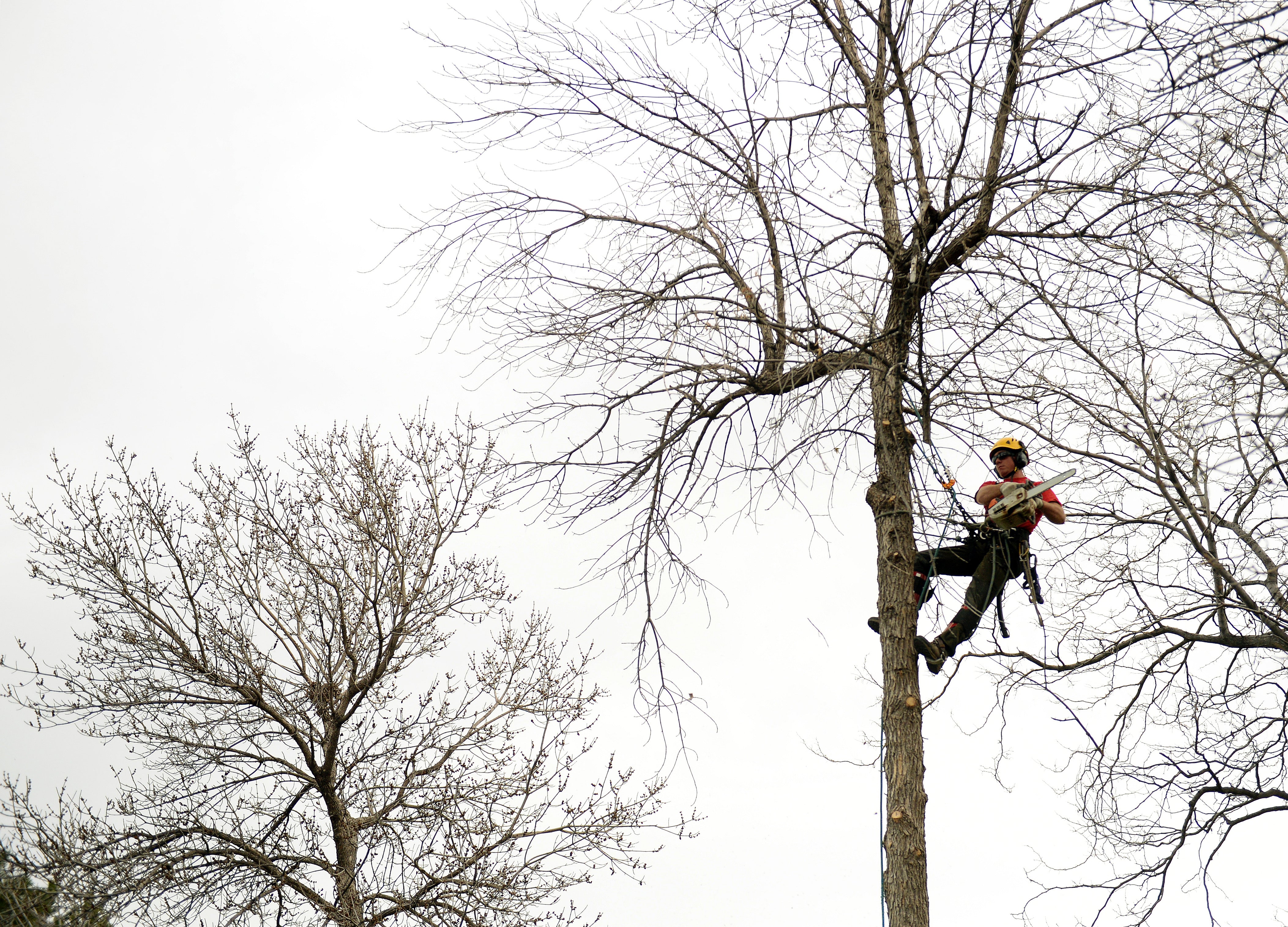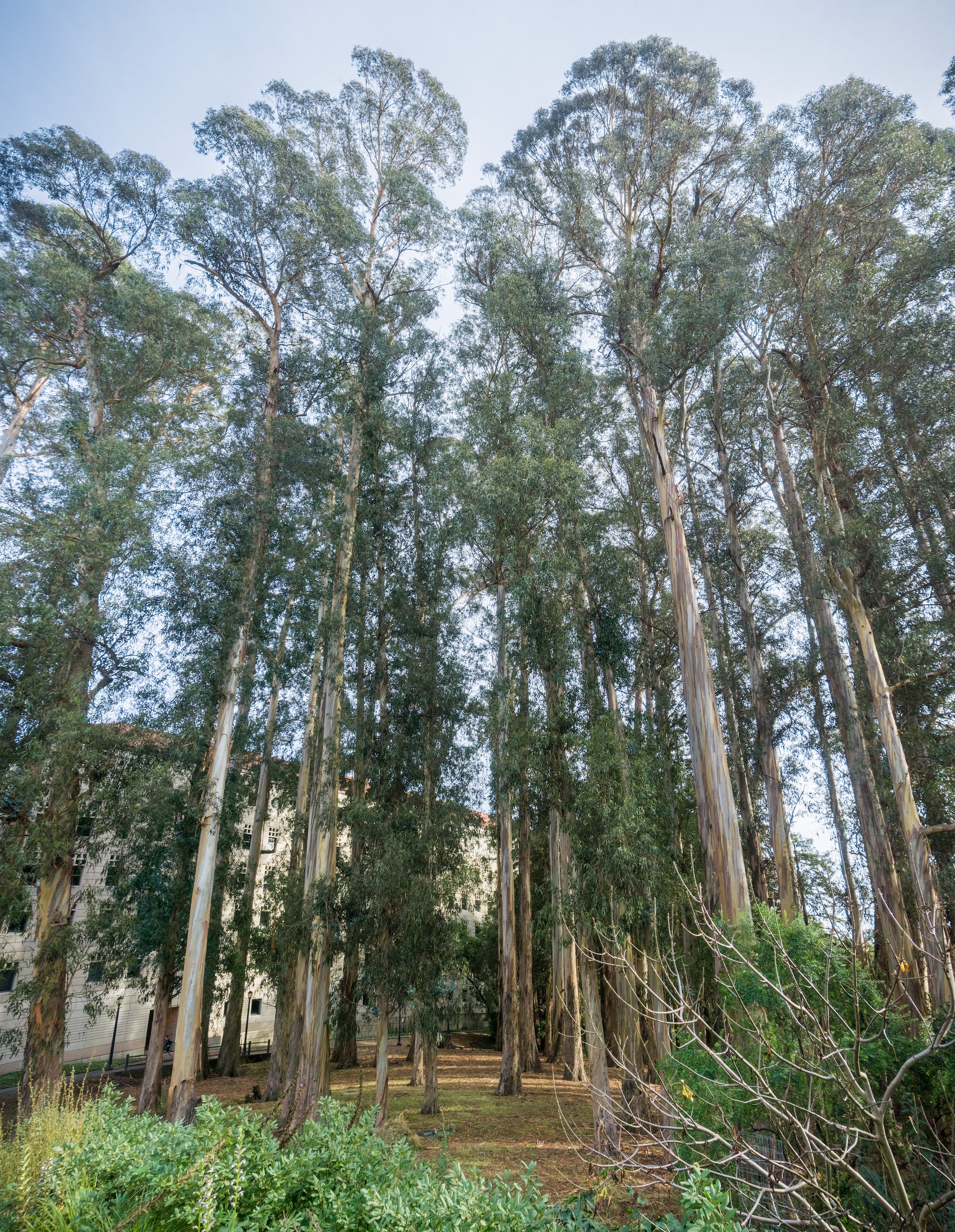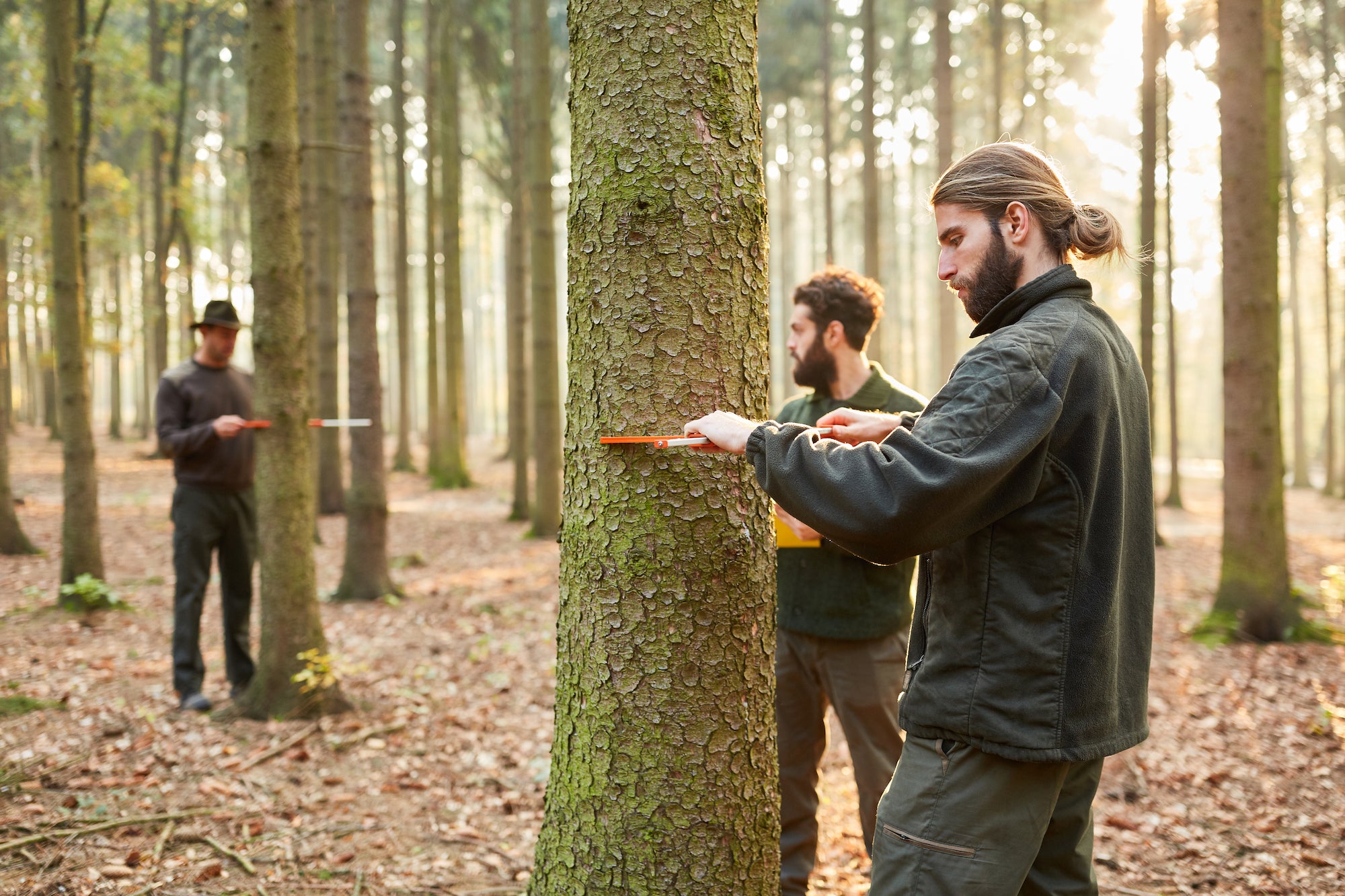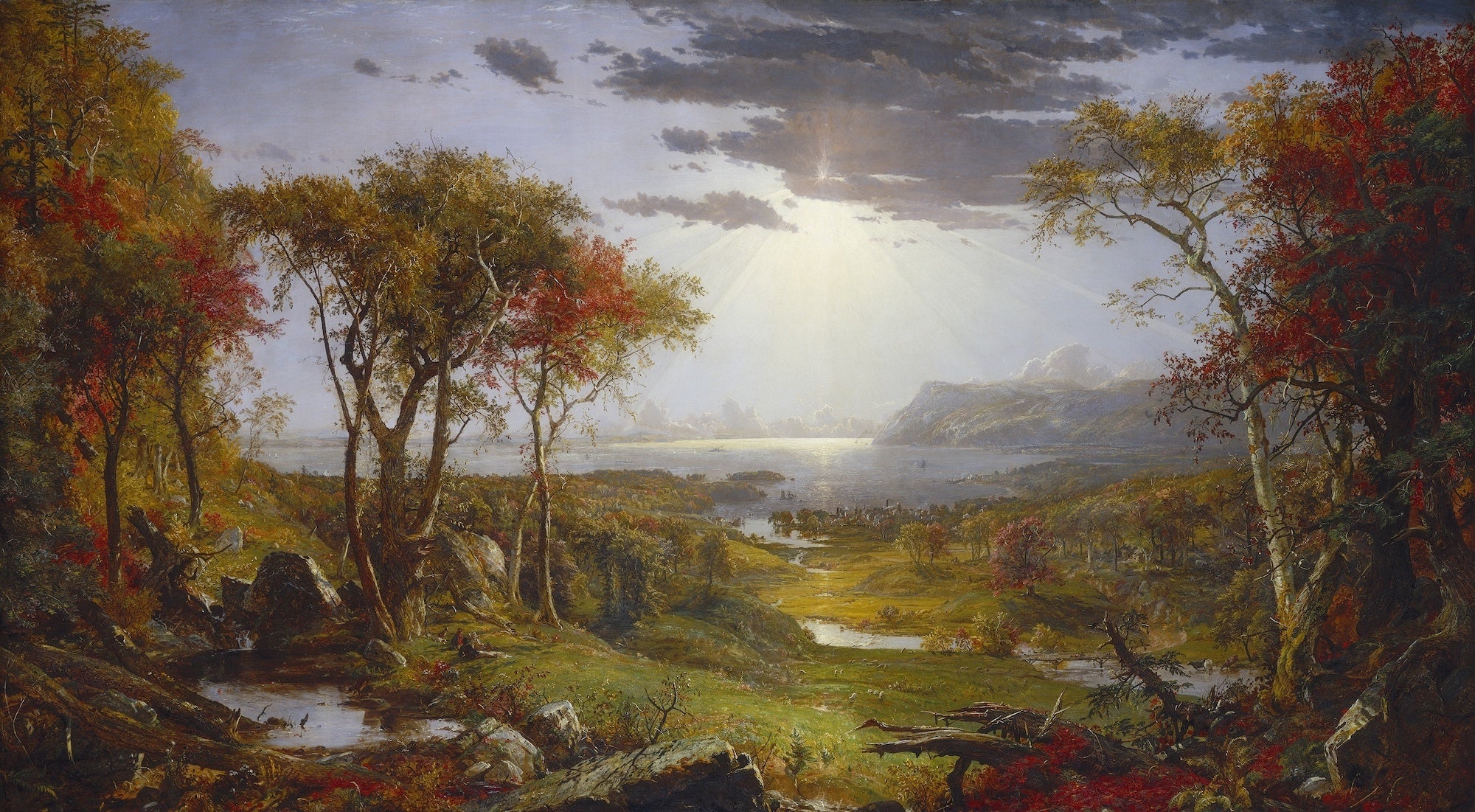I am haunted by an enduring story from my years as a professional tree climber. A story I wish I could say only happened once, or maybe twice.
I had hoped the characters were similar in age or socio-economic status. Some common attributes that would help silo a personality type, and allow the thread of their ill-conceived wish to melt seamlessly into my judgmental mind. Nope! This narrative involves people of all stripes. Retired union reps, bankers, stay-at-home parents, those with pricey imports parked in the drive, and those with dented domestics.
It goes a little like this: “I want you to cut down this tree. There are too many leaves and every year I am out here raking and picking them up.” Internally I’m acknowledging my role in the company with which I’m employed, as well as my compassion for humanity. I’m also wondering how they came to this particular cross-section of stimulus and response. To be clear, theirs is NOT the only tree in the vicinity. If you are picturing a single tree poised majestically on a hill, perched over a house wilting leaves into the pristine gutter, stop. In fact, there are typically dozens of other trees in the vicinity. Many are equally as tall if not taller. Some have severe structural defects which need addressing sooner than the tree in question. Leaves and needles of the various species are strewn about the yard and roof.
Internally I’m acknowledging my role in the company with which I’m employed, as well as my compassion for humanity. I’m also wondering how they came to this particular cross-section of stimulus and response.
I am in a position of little power. I did not sell the job, nor am I able to simply change the scope of work. I smile politely and say, “Sure, we can do that. Where do you want the wood to go?” And we commence. There have been a few occasions where using the Migratory Bird Act of 1918 has spared a tree from the fickle gallows of a random client (this law has been gutted under the new administration).

Let’s zoom out here a bit and gain a larger picture. The US Forest Service estimates there are about 300 billion trees in the United States. A billion of those trees are bigger than a finger-touching hug. The majority of us will never see many of these trees. However far off and distant some of the giants of the forests may be, there are urban landscapes replete with denizens of earlier generations. If you’ve walked the Mall of Central Park you might remember the grand promenade of American Elms, one of the few remaining stands of these nearly extinct beauties. If you have found yourself stepping onto UC Berkeley’s campus you might wander into the stand of awe-inspiring Tasmanian Blue Gum Eucalyptus, some of which tower to nearly 200 feet.

The static, unmoving nature of trees allows little recourse to our demands for lumber, paper, and the quaint chainsaw carvings of an upright bear holding a fish. According to the US Forest Service, with only five percent of the global population, we consume 28 percent of global wood products. Without trees providing habitat, stabilizing soil, purifying water, cooling the ambient air temp we would have to come up with $2.4 trillion to achieve our current stasis.
The static, unmoving nature of trees allows little recourse to our demands for lumber, paper, and the quaint chainsaw carvings of an upright bear holding a fish.
Mature urban trees are the way most of us will interface with these enormous living plants… the processes of turning a tree into soft toilet paper are not as easily forgettable as its utilitarian ubiquity. The wood floor you recently tread upon harbors a long narrative before many of us were born. My dresser grew in the tropics, was hauled thousands of miles to a factory on another continent where it transformed into the useful piece it is today, and knowing a bit about FSC certification helps me sleep at night. But what else has an impact? Hold on to this dresser! I hear in my head. Reduce demand! I decide I shall see it off to a new family or friend if/when the time comes. Keeping it and its counterparts (furniture) out of landfills is a worthy target. Furniture exists as a result of many years of maturation and biological cohabitation. It may take another 75 years or more for the materials to be available again.
Take the tree from our previous example in the backyard. For illustrative purposes, it’s a Red Oak (Quercus rubra), and it’s bigger around than a beachball. Say, 25 inches in DBH, or diameter at breast height.

This tree is mature in three ways:
- Biological maturation indicates this tree is capable of reproducing itself!
- Financial maturation allows for millable lumber. Even smaller trees make the cut. Tens of thousands of virgin trees, the diameter of a softball, are cut down to make pulp fibers for books, newspapers, and yes toilet paper. We are still cutting down trees to produce toilet paper.
- Aesthetic maturation has roots in subjectivity, as well as an extension of biological maturation. A tree can begin reproducing itself at a young age, and yet an individual tree’s full aesthetic potential (crown height, shape, and wow factor) may take upwards of several hundred years to manifest. An example: Giant Sequoia.
Our mature tree represents the foundations of our personal maturation. As each of us matures in the world, we become educated and employable — now capable of our own reproduction, purchasing power, and contributions to culture! All well and good, but what are the options? How can each of us work in some postmodern Free Jazz concert to effectuate change? Like all great movements — there are many events that lead to change. You don’t have to carry the burden of upcycling on your shoulders alone. In the same way that your individual vote doesn’t really count, but when 10,000 people show up, it counts! When 10,000 people decide to use cloth napkins or bamboo toilet paper… that matters! It’s a decision to employ change in your life: because YOU talk about it, others will too. Because YOU matter, others will listen. Thoughtful consumption has roots that pre-date capitalism and stem (puns intended) to the ethos of First Nations people, where only what was needed was taken.
You don’t have to carry the burden of upcycling on your shoulders alone. In the same way that your individual vote doesn’t really count, but when 10,000 people show up, it counts.
NGOs and certification bodies have long sought a middle path to link consumers to producers. There are many we could point to, but those which you hopefully encounter often, or at a minimum should be on the lookout for as an examining consumer include:
- Forest Stewardship Council® — The Forest Stewardship Council (FSC) is an international non-profit created in 1993 in response to the inability of the 1992 Earth Summit in Rio to reach an agreement to stop deforestation. Now, FSC operates in more than 80 countries to certify responsible harvesting and use of timber. Based in Bonn, Germany, the FSC balances environmental, economic, and social considerations to offer a standard supported by the Sierra Club, the WWF, and many others. Look for their logo when purchasing wood furniture, wood products, or lumber at a local hardware store.
- OEKO-TEX® — The International Association for Research and Testing in the Field of Textile and Leather Ecology, or OEKO-TEX, certifies the ethical manufacturing and use of textiles. Based in Zurich, Switzerland, OEKO-TEX was created in 1992 and now consists of 18 independent textile research institutes across Europe and Japan. OEKO-TEX tests and certifies safe, socially and environmentally-conscious textile products. Look for their logo when purchasing textiles and even clothing. OEKO-TEX certifies up and down the soft-goods supply chain, from upholstered furniture, to home essentials like towels and sheets, to leather (both in furniture and fashion), and even clothing items like fabric and cloth buttons.
- Certified B Corporation® — B Corporation is a certification body created in 2006 by B Lab, a global nonprofit organization, to help mission-driven for-profit companies identify, certify, and increase their positive impact over time. Over 2,900 “B Corps” exist in more than 50 countries. B Corporation certification evaluates the entirety of a company’s social and environmental performance. Look for their logo when purchasing goods across all industries.
- One Percent for the Planet℠ — One Percent for the Planet is a global nonprofit that, through its members, contributes one percent or more of annuals sales toward other approved environmental organizations. Headquartered in Burlington, VT and created in 2002 by Patagonia Founder Yvon Chouinard and Blue Ribbon Flies Founder Craig Mathews, One Percent for the Planet has contributed more than $200 million to environmental nonprofits that protect waterways, oceans, forests, and natural lands around the world. Look for their logo when purchasing goods across all industries.

These organizations, whether by choice or necessity, do not produce and air flashy commercials to bring awareness to primetime networks — but in no way does that make them any less relevant.
When shopping, ask where it came from, how it got here, are there safeguards that enforce labor standards, and if so what are the standards and who sets them? Feel as though this is a rabbit hole that may dissuade you from buying that luminous wooden salad bowl or geometric planter? Don’t fret — these are the questions we should all ask if we don’t know the answer, and even if one or more shopkeepers can’t tell you either.
It’s lunchtime, an opportune moment for our homeowner to come out to chat. ‘I want to plant another tree.
Me: That’s great, what kind are you thinking and where?
Homeowner: I really want something right where the old one sat. I’d like something that grows fast. I’m already missing the shade this tree used to bring us.
Me (deadpan): That’s great, it’s unlikely you will gain the shade you had in our lifetime. To reach that height it will take decades.
Homeowner: Oh, I didn’t think it would take that long. (Long pause) I’m so glad there won’t be leaves in my gutter and yard this fall. There was just so much maintenance.
Our homeowner unwittingly articulates a broader, contemporary pattern of behavior. It’s easy to buy into the quick fix, or the newest version. But does it really mean that we need it? From my experience working as an arborist, I’ve found that many people respond to education in positive ways. I can use language like ‘climate crisis’, or ‘climate change’, and if I sense that I might alienate by that language, then ‘habitat for creatures big and small’ creates a safer point of entry. Knowledge is power, and power can be doing nothing, to a small something. It’s your vote, and with it, the votes of others.

